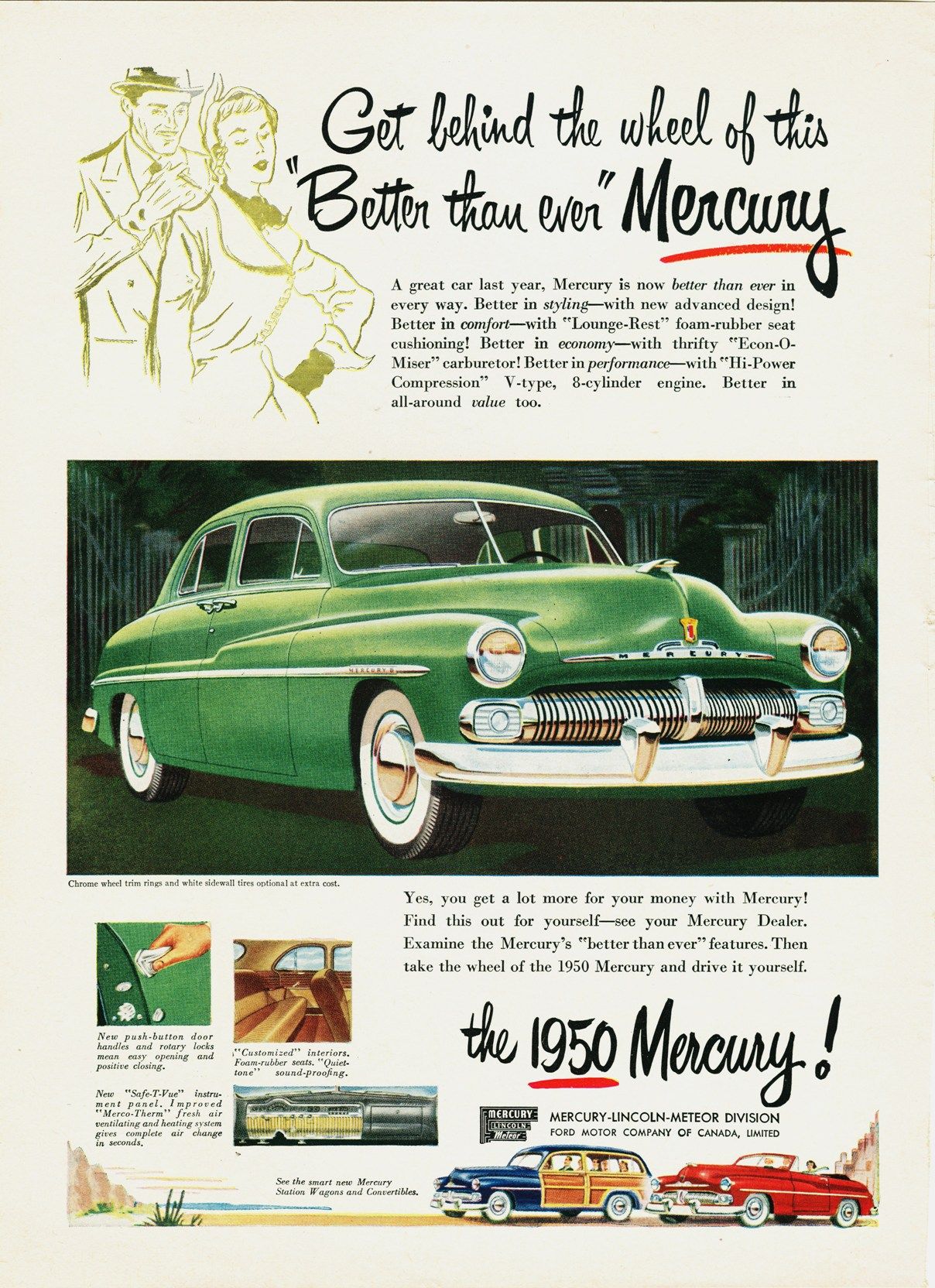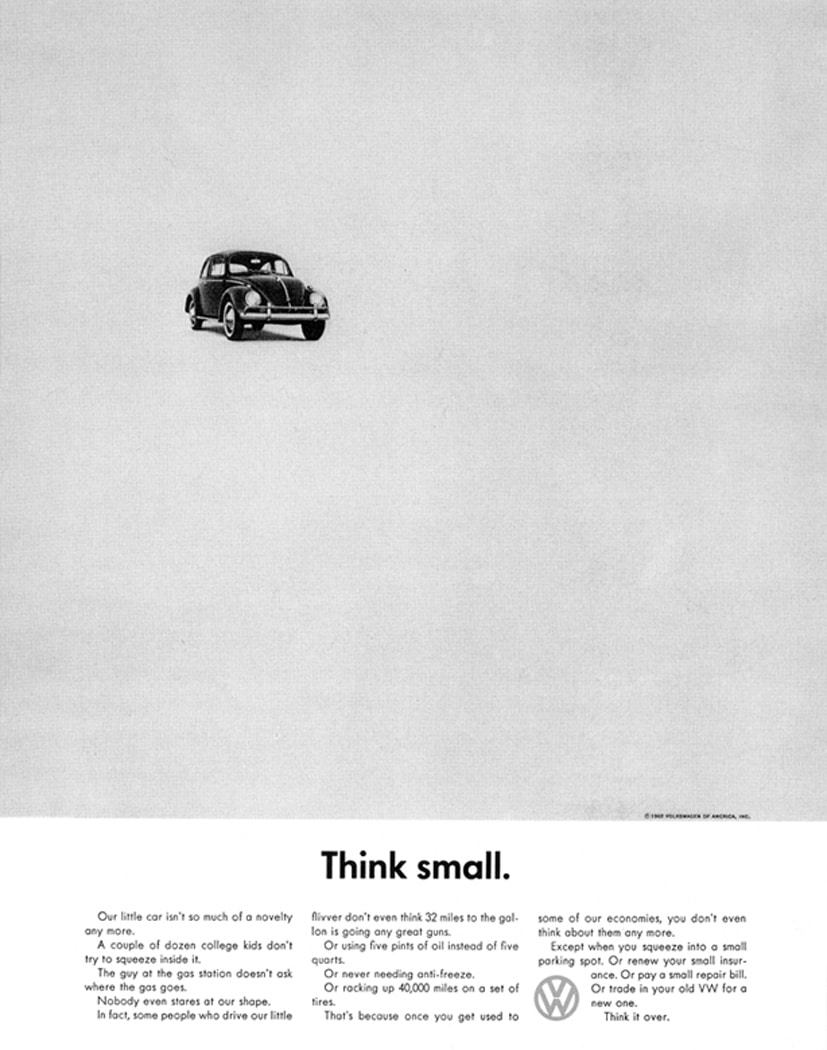Advertising’s Creative Revolution took place in the late 50s and 60s, kicked off by Bill Bernbach and his agency, Doyle Dane Bernbach.
To understand what was so revolutionary, it’ll help to review what advertising was like in the early to mid 50s:
- Text dominant ads with pictures applied after the copy was created, mainly to add pizzazz to the words
- Ads jammed full of words, pictures, call-outs, and copy points in the style of most magazine covers
- Constant use of the cheerful, authoritative, announcer voice proclaiming nothing but positive news
- Logic-dominated, reason-why copy, as immortalized by the Ted Bates agency’s Unique Selling Proposition
- Generous use of Bullshit & Puffery — especially when reasons-why couldn’t be found
Here’s an example:

Bill Bernbach’s revolutionary style was the exact opposite:
- Visually striking ads where the words and pictures combined into something greater than the sum their parts
- Copywriters and Artists worked together to create the ad in tandem, rather than pictures applied after the copy was written
- Strong use of white space. The idea was to convey a single, strong Big Idea, rather than overwhelming viewers with copy points
- Use of a human, natural and even self deprecating tone of voice. Willingness to point out or even emphasize supposed negatives
- Subordinating logic to the creative communication of a Big Idea aimed to grab listeners’ attention
- Total absence of bullshit and puffery
And here’s the ad that has become a canonical example of Bernbach’s approach:

As you can see, the creative revolution deserved its name.
But what about Radio?
Radio also had some creative advertising geniuses:
And, yes, these guys were every bit as creative on radio as Bernbach and his progeny were in print and TV.
As an example, Bernbach’s agency is frequently given credit for the single most powerful political advertisement ever created:
But although DDB produced the ad, it was actually created by Tony Schwartz.
In fact, Tony had written and produced almost the exact same ad for radio a few years prior. Which is why if you play the “Daisy” ad and close your eyes, it loses almost nothing.
So why didn’t Radio have a creative revolution, just like Madison Avenue?
I think there are two reasons:
First, when Bernbach created revolutionary print and TV ads, all the other big agencies realized they had to up their game.
The entire industry had to change and adapt to this new style of advertising. And they did.
But when Orkin and Schwartz and Williams created great radio ads, almost nobody in radio felt any immediate pressure to up their game.
Radio was making money hand over fist. It was the music and disk jockeys that mattered. Who cared if the commercials were only mediocre?
Second, Bernbach’s strategy of teaming copywriters with artists works brilliantly for print, billboards, and TV. But not for radio.
And the radio industry never bothered to transform that technique for their medium.
Radio never teamed up copywriters with sound producers to create great ads that pushed Theatre of the Mind to full effect and that were more than the sum of their parts.
In the golden age of radio, the industry had done this sort of thing for their content — for all the great radio dramas they played back then.
But they never did it for advertising, and whatever radio had learned about Theatre of the Mind in the 30s, 40s, and 50s, it was largely lost by the time the 60s rolled around.
So if you’re wondering why most radio ads are:
- Announcer-reading text dominant with sound effects mainly used to add pizzazz to the words
- Jammed full of words and copy points with little room left for pauses or “audible white space”
- Infested with cheerful, authoritative, announcer voices, and
- Notorious for bullshit and puffery
It’s because Radio never had its creative revolution in advertising. It’s stuck in the 50s, creatively speaking.
So…
Wanna start a revolution?
Or better yet, wanna enjoy the fruits of creative, effective radio advertising while your competition remains stuck in the 50s? Reach out.
- Getting a Foot in the Door — Of Perception - November 27, 2025
- What Digital Superstars Know About Offline Advertising - November 17, 2025
- Unmistakable: A Tale of Two Boots and Branding Done Right - November 8, 2025
